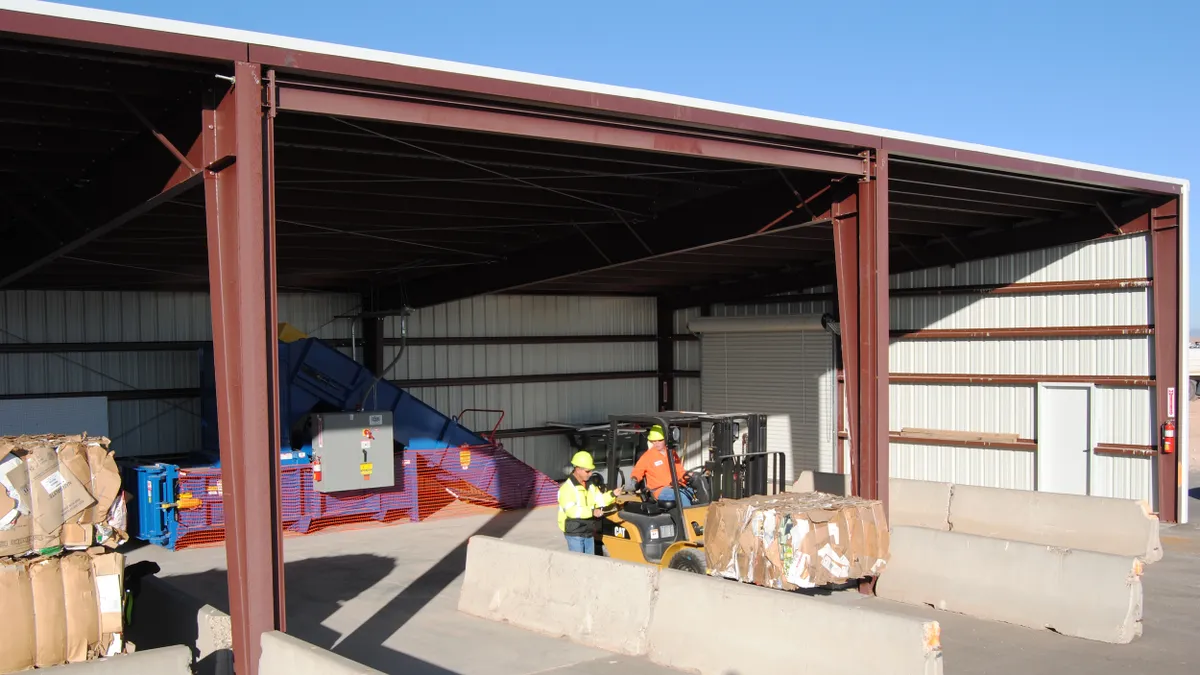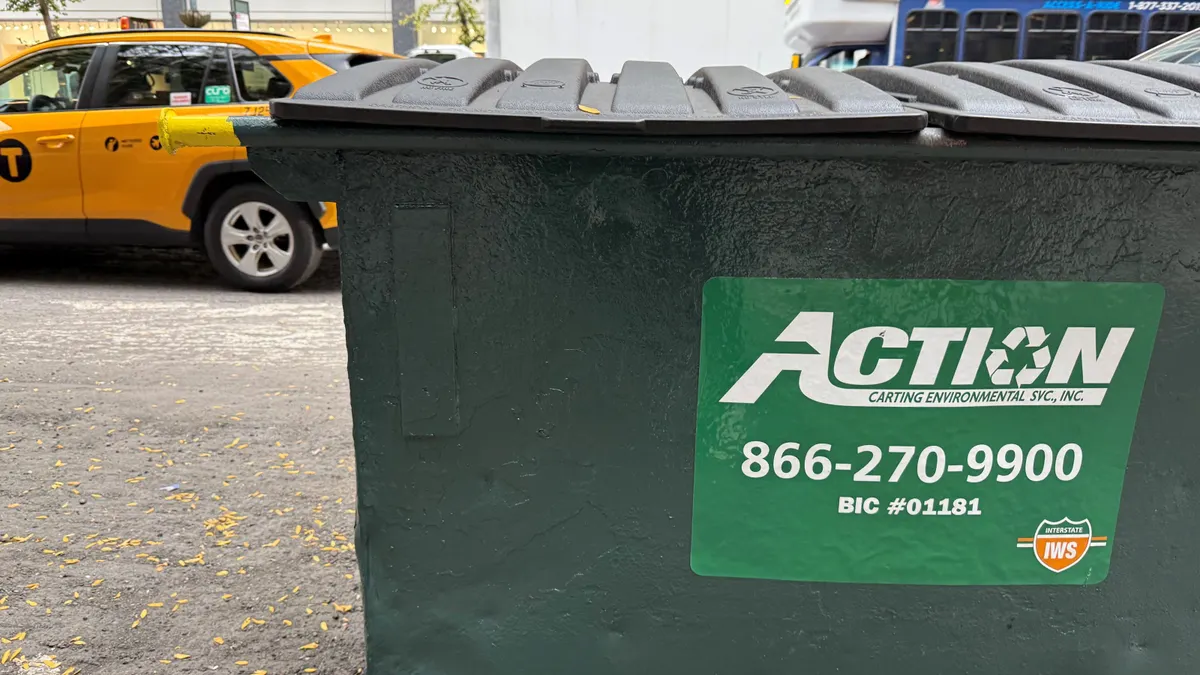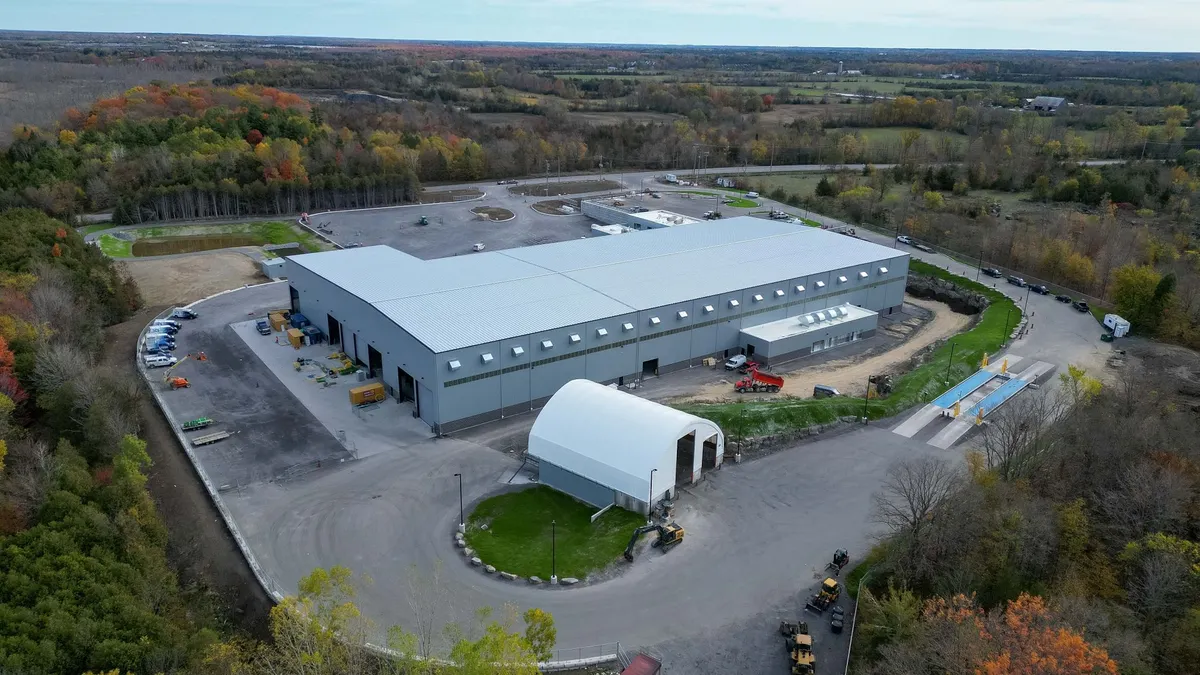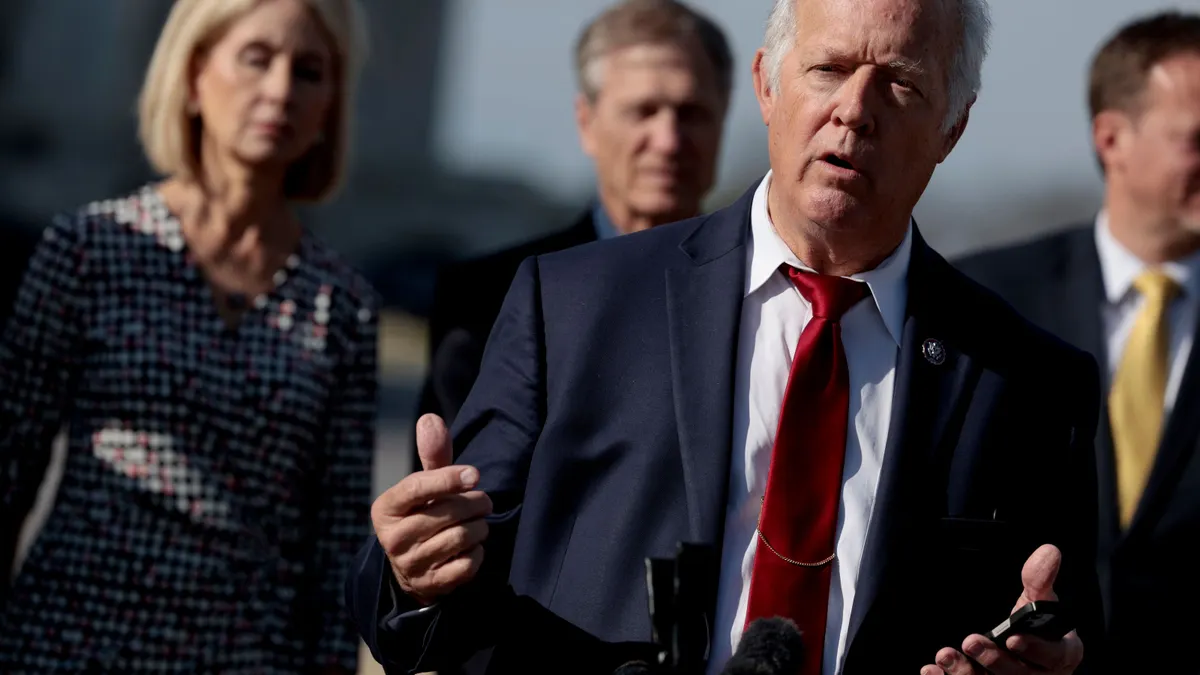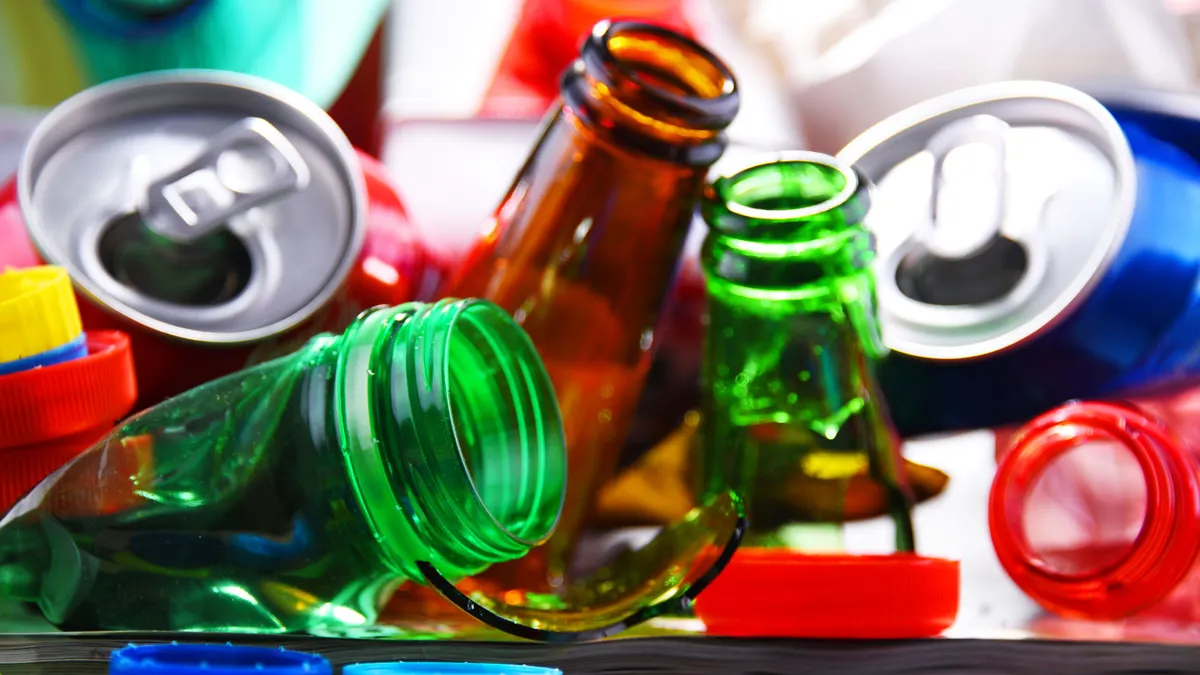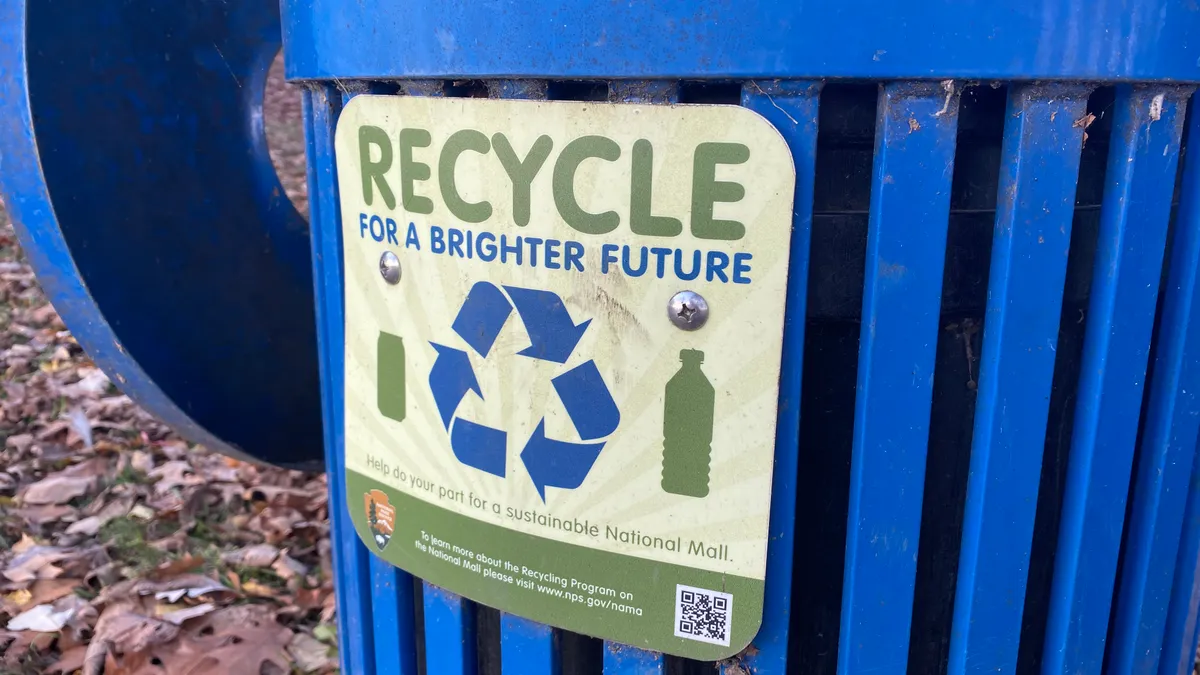A seed of an idea planted years ago — to boost recyclable collection and management across the country — has started reaching its tendrils into rural regions.
The U.S. EPA’s Solid Waste Infrastructure for Recycling grant program, part of the Infrastructure Investment and Jobs Act, announced its first 139 recipients last year. Many of the awardees are municipal or tribal organizations focused on strengthening rural collection systems.
Roughly 40 million households had more limited recycling access than trash services in 2021, according to a report from The Recycling Partnership. Some of those homes are likely in one of the many states that lack laws requiring recycling of any kind. At the time, the nonprofit group estimated it would take $17 billion to make up that difference. This projection encompassed multiple categories of investments, such as 204 hub-and-spoke systems that are key to administering rural recycling programs.
Part of how the U.S. EPA approaches equitable waste service access and maintenance is expanding recycling access in rural regions. But the shared “rural” designation also disguises how wide-ranging the logistical needs are for different communities. Some grant recipients navigate 30-minute drives between various towns. Others need planes or boats to reach nearby communities.
The planned uses for the initial round of SWIFR funds highlights a range of approaches to how rural governments are trying to boost their programs around the country. Now, one year after those grants were first announced, projects are starting to gain traction.
“Even though you can't see any results on the ground, there's a lot administratively happening behind the scenes,” said Amanda Kerns, a senior planner at the Northern Shenandoah Valley Regional Commission in Virginia, one of the grant recipients. “Once it does get implemented, we've kind of thought everything through on the forefront and hopefully, fingers crossed, there's no surprises on the back end.”
Other recipients are in similar positions, buying buildings to enhance their regional recycling capacity or at least wrapping up paperwork standing between them and the initial steps of their projects.

Infrastructure funding plans
The EPA announced the inaugural, $105 million round of SWIFR grants in the fall of 2023. The agency recently opened up applications for another $117 million worth of grants under these programs. Under the infrastructure law, the agency currently has at least $350 million to spend on this and the Consumer Recycling Education and Outreach grant program through 2026.
While funding for the two grant programs comes from the infrastructure law, the ideas for what activities the money should support come from the EPA’s National Recycling Strategy.
First conceptualized six years ago, with a goal of reaching a 50% national recycling rate by 2030, the strategy became official in 2021. Goals like waste characterization studies, lower contamination levels and boosted recyclable collection rates named in the strategy show up in some of the successful applications to the competitive SWIFR grant program.
Among the first round of rural SWIFR grant recipients, many leaned into the infrastructure focus by requesting money for capital expenditures such as buildings and equipment.
A portion of the nearly $4 million that the Northern Shenandoah Valley Regional Commission, or NSVRC, was awarded will go toward a new shredder that will pluck steel out of tire segments and mulch the rubber. The region already has equipment for breaking tires into two-inch chips, but local markets wanted a more finely-milled product, Kerns said.
In Missouri, the Boonslick Regional Planning Commission received $1.04 million for serving four counties. It is putting some of the funding toward building a new warehouse that will at least quadruple the amount of storage space the East Central Missouri Recycling Center has for collected cardboard, plastic and paper.
The extra room will allow the commission to store materials as they trickle in until there’s enough weight or volume to interest buyers. The space even allows the center to temporarily sit on material if market changes mean it’s better to hold off on a sale, allowing the commission to maximize its sales revenue and be less reliant on annual funding Walch applies for.
“The only funds coming into a recycling center are the sale of your product going back out the door,” said Chris Walch, the commission’s recycling center manager. “Unless you've got charges for everything, and then you're not nothing but a charging center.”
Big processing facilities are also on the agenda in Western Alaska for Kawerak, the official SWIFR grant recipient that serves 20 federally-recognized tribes in the Bering Strait region. The organization doesn’t have a facility to process recyclables, said Vanessa Tahbone, Kawerak’s environmental coordinator. For years, sorting has been done outdoors. A $1.5 million grant will allow processing to be done inside any time as well as help fund a baler for multiple types of material.
Data-informed decisions
Data about the types and amounts of materials that get recycled can help make a SWIFR application persuasive. Some localities have that information at hand because of tracking requirements.
In Virginia, for example, solid waste planning units file recycling rates annually or every four years, depending on how many people they serve. Kerns and her colleagues tapped into NSVRC’s yearly reports to the Virginia Department of Environmental Quality when revamping its solid waste management plan in 2022.
A look at the NSVRC data showed recycling rates had at one point dipped as much as 12% in the previous five years, while the number of municipalities with curbside services dwindled from nine to three. The commission, wanting to inch those statistics upward, is putting some of its grant funding toward supplying towns with curbside recycling bins and the costs of a broader collection contract that can cover multiple communities. The intent is to take on the financial burden of setting up a service the localities themselves pay for, Kerns said.
Elsewhere, however, having reliable data is a challenge. The Nebraska Recycling Council would like to apply for competitive grants, said Maddie Ferber, previously a program director with the nonprofit, but has limited data.
The council sends out an annual survey to each municipality with questions about what gets recycled or what problems the communities are dealing with, but the replies are optional and few get completed. Last year, only 50 of over 500 municipalities in the mostly rural state participated. While Nebraska encourages local governments to collect the same information, it is not a requirement.
“If we can't accurately say what's going on, it gets pretty difficult to apply for things like the SWIFR grant program,” Ferber said.
Ferber knows one reason why the survey gets few responses. Rural county clerks have hefty workloads and the jobs frequently change hands, meaning the current employee is often either catching up on a long to-do list, still on a learning curve for their responsibilities, or both.
Other smaller towns and governments are likely dealing with similar problems. Local government employment generally dropped off during the pandemic. A report from the National League of Cities found the sector saw a bigger decline than any other from 2020 to 2022.
Frequent staffing changes or vacancies in rural areas can also make keeping up with waste-related grant management a challenge.
In her role with Kawerak, Tahbone provides technical assistance for member tribes, many of which have funding from the EPA’s Indian Environmental General Assistance Program. The grant requires quarterly reports. Since the tribal positions that handle the forms also deal with high turnover, Tahbone often walks new employees through the logistics.
On the other hand, the retention of dedicated works can be just as notable for a recycling program’s success.
The Kawerak collection system started in 2010, when Anahma Shannon, an environmental program director with the organization, put different grants toward a hazardous waste backhaul system. Nearby tribes are only accessible via boat or planes, so local airlines complete deliveries and return to Nome with items such as TVs and more.
Since then, Kawerak has expanded the approach for other recyclables. Shannon is a “go-getter,” Tahbone said. “She has a broader perspective and bigger initiative in mind.”
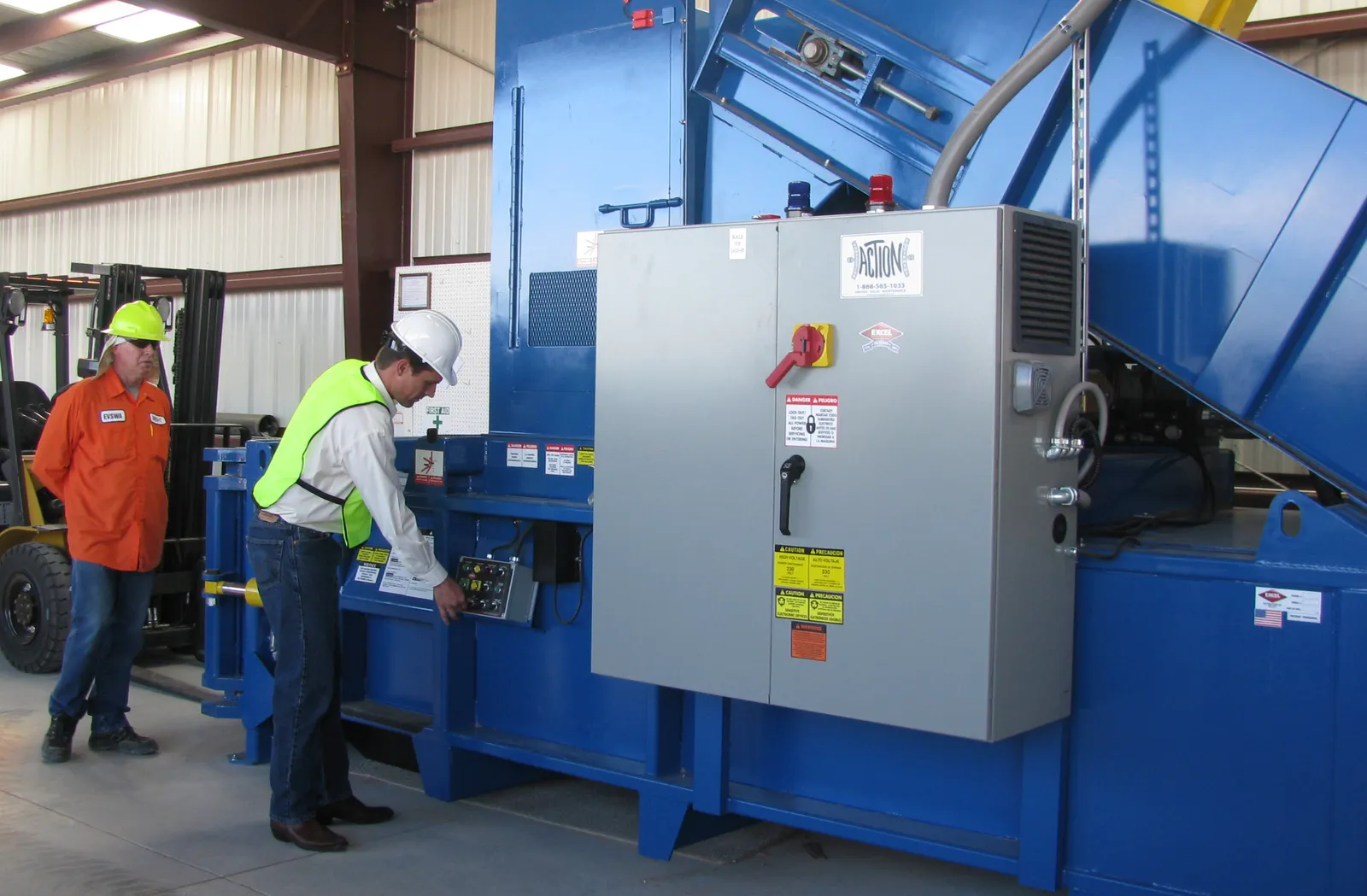
Learning how to scale
The influence of a single, ambitious person has also been felt in New Mexico, in an example of how rural areas can scale their program.
In 2010, the New Mexico Recycling Coalition began building a more robust rural recycling network with $2.79 million from the American Recovery and Reinvestment Act. The funds were reallocated to six new municipal “hubs,” two existing hubs and over 40 “spokes” as drop-off sites. Not all of those locations are operating today, but the ones that are often have employees that have been there since the beginning. Retirements, which were particularly prevalent during the pandemic, make it hard to replace longtime employees, said NMRC Executive Director Sarah Pierpont.
Even if someone on the ground was all-in on recycling, the New Mexico initiative had other qualifications for becoming a hub or spoke. The preferred candidates for the recycling infrastructure were limited to a few localities that NMRC had already identified as being prime locations for collection sites. A “wasteshed” map showed how trash and recyclables moved through the region and revealed locations that could serve as accessible drop-off points for a number of people.
The mapping allowed the infrastructure to be right-sized. In rural areas, Pierpont said, “counties and cities that all have their own landfill and all have their own recycling center — it's a waste of resources because they don't need to be 20 miles from each other.” If processing and collection equipment is too close to each other then programs start to compete for recyclables that need to be pooled if any organization is to stay afloat from the sales of processed material.
SWIFR recipients have similar strategies in place to make sure their physical reach is large enough to encourage recycling and support a profitable, or at least break-even, operation.
One recipient, the Otoe-Missouria Environmental Department in Oklahoma, has offered plastics Nos. 1 and 2, aluminum, paper, and cardboard recycling to the Otoe-Missouria Tribe for years. The tribe is small, rural and is near a number of other communities within 30 minutes. The SWIFR grant application — which ultimately awarded $1.5 million — was written with the intention of servicing those other tribes too.
“It is more feasible to have one facility since we are so close in proximity and can be staffed by those in the community or those nearby,” wrote Angela Heim, environmental director of the Otoe-Missouria Tribe, via email.

In Missouri, some space in the new Boonslick Regional Planning Commission’s storage and processing center will be filled by materials collected in the commission’s own trailer that will park once a month at 20 different communities as a drop-off spot.
Some nearby recycling centers have a hard time collecting the volumes that buyers want. Once he has the space to do so, Walch wants to become the intermediary and help aggregate volumes."
“It's gonna give them some more funds than they had before to help keep it going,” Walch said.
Despite careful strategizing and resource allocation, rural communities building up recycling infrastructure can have plans upended if buyer behavior changes drastically. Market demand and dependability in rural areas is a problem that the EPA’s National Recycling Strategy wants to address, too.
In Nebraska, Ferber has seen collection programs disappear when one cardboard and paper operation determined the ratio of materials from residential areas no longer matched what it needed.
SWIFR grant recipients in rural areas are keeping these market factors in mind, but say that even if markets change they’re still motivated to find a way to provide recycling service due to resident support.
“People understand that recycling is a quality of life issue, and they want to provide that service to their residents,” Pierpont said. “It's just a matter of being able to figure out the logistics and the funding.”
This story first appeared in the Waste Dive: Recycling newsletter. Sign up for the weekly emails here.


